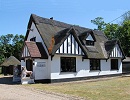Contact Seller
Martlesham Antiques
Tel01394 386732or07889724434Please quote Antiques Atlas.


 Heavy Vintage Bohemian Female Bust, Continental
Heavy Vintage Bohemian Female Bust, Continental
 Bronze Bust of a Young Woman by Lambeaux c.1900
Bronze Bust of a Young Woman by Lambeaux c.1900
 Jean Racine, Barbedienne bust
Jean Racine, Barbedienne bust
 19th Century Gilt Bronze Bust 'Le Petit Roi'
19th Century Gilt Bronze Bust 'Le Petit Roi'
 Large Plaster Bust of a Gentleman c.1900
Large Plaster Bust of a Gentleman c.1900
 Henry Wissen 1894-1914 French Bronze Maiden Bust
Henry Wissen 1894-1914 French Bronze Maiden Bust
 Woman Art Form Forties Era
Woman Art Form Forties Era
 19thc marble bust of a young girl signed ‘Houdon’
19thc marble bust of a young girl signed ‘Houdon’
 Copper bust of Princess Alexandra of Denmark
Copper bust of Princess Alexandra of Denmark
 Marble Bust of a Gentleman by John Wenlock Rollins
Marble Bust of a Gentleman by John Wenlock Rollins
 A Marble Bust Of Plato On A Plinth
A Marble Bust Of Plato On A Plinth
 Alabaster Bust
Alabaster Bust
Non UK callers :
+44 1394 386732
or +44 7889724434
or +44 7889724434
19th Century bust of Ophelia


A 19th Century parian bust of Ophelia by Copland, the bust has inscribed at the base " W.C Marshall R A Sculpt" "Copeland" "Crystal Palace Art Union"
Parian ware is a type of bisque porcelain imitating marble. It was developed around 1845 by the Staffordshire pottery manufacturer Mintons, and named after Paros, the Greek island renowned for its fine-textured, white Parian marble, used since antiquity for sculpture. It was also contemporaneously referred to as Statuary Porcelain by Copeland. Parian was essentially designed to imitate carved marble, with the great advantage that it could be prepared in a liquid form and cast in a mould, enabling mass production.
Parian ware was utilised mainly for busts and figurines, and occasionally for dishes and small vases, such as might be carved from marble. Several English factories claimed credit for its development. In 1845, as part of a concerted effort to raise public taste and improve manufactures, the Art Union of London commissioned Copeland to make a series of figures after works by leading contemporary sculptors. Mintons and Wedgwood produced similar wares, also known as "statuary porcelain", parian was initially used for relatively high quality work.
5" x 3" x 11" high.
13cms x 8cms x 28cms high.
SellerMartlesham Antiques
View all stock from
Martlesham Antiques

 Martlesham Antiques
Martlesham Antiques
The Thatched Roadhouse
Main Rd, Martlesham
Suffolk
IP12 4RJ
Tel : 01394 386732
or : 07889724434
Non UK callers : +44 1394 386732 or +44 7889724434
Get directions to Martlesham Antiques
Parian ware is a type of bisque porcelain imitating marble. It was developed around 1845 by the Staffordshire pottery manufacturer Mintons, and named after Paros, the Greek island renowned for its fine-textured, white Parian marble, used since antiquity for sculpture. It was also contemporaneously referred to as Statuary Porcelain by Copeland. Parian was essentially designed to imitate carved marble, with the great advantage that it could be prepared in a liquid form and cast in a mould, enabling mass production.
Parian ware was utilised mainly for busts and figurines, and occasionally for dishes and small vases, such as might be carved from marble. Several English factories claimed credit for its development. In 1845, as part of a concerted effort to raise public taste and improve manufactures, the Art Union of London commissioned Copeland to make a series of figures after works by leading contemporary sculptors. Mintons and Wedgwood produced similar wares, also known as "statuary porcelain", parian was initially used for relatively high quality work.
5" x 3" x 11" high.
13cms x 8cms x 28cms high.
Price The price has been listed in British Pounds.
Conversion rates as of 11/JUN/2025. Euro & Dollar prices will vary and should only be used as a guide.
Always confirm final price with dealer.
Category Busts and Figures
Date 1850
Early Victorian Antiques Origin English
Item code as256a1368
Status Sold
£445.00 
$602.44 
€524.74 

$

€

Conversion rates as of 11/JUN/2025. Euro & Dollar prices will vary and should only be used as a guide.
Always confirm final price with dealer.
View all stock from
Martlesham Antiques

 Martlesham Antiques
Martlesham AntiquesThe Thatched Roadhouse
Main Rd, Martlesham
Suffolk
IP12 4RJ
Tel : 01394 386732
or : 07889724434
Non UK callers : +44 1394 386732 or +44 7889724434
Get directions to Martlesham Antiques
You may also be interested in
 Heavy Vintage Bohemian Female Bust, Continental
Heavy Vintage Bohemian Female Bust, Continental
 Bronze Bust of a Young Woman by Lambeaux c.1900
Bronze Bust of a Young Woman by Lambeaux c.1900
 Jean Racine, Barbedienne bust
Jean Racine, Barbedienne bust
 19th Century Gilt Bronze Bust 'Le Petit Roi'
19th Century Gilt Bronze Bust 'Le Petit Roi'
 Large Plaster Bust of a Gentleman c.1900
Large Plaster Bust of a Gentleman c.1900
 Henry Wissen 1894-1914 French Bronze Maiden Bust
Henry Wissen 1894-1914 French Bronze Maiden Bust
 Woman Art Form Forties Era
Woman Art Form Forties Era
 19thc marble bust of a young girl signed ‘Houdon’
19thc marble bust of a young girl signed ‘Houdon’
 Copper bust of Princess Alexandra of Denmark
Copper bust of Princess Alexandra of Denmark
 Marble Bust of a Gentleman by John Wenlock Rollins
Marble Bust of a Gentleman by John Wenlock Rollins
 A Marble Bust Of Plato On A Plinth
A Marble Bust Of Plato On A Plinth
 Alabaster Bust
Alabaster Bust







